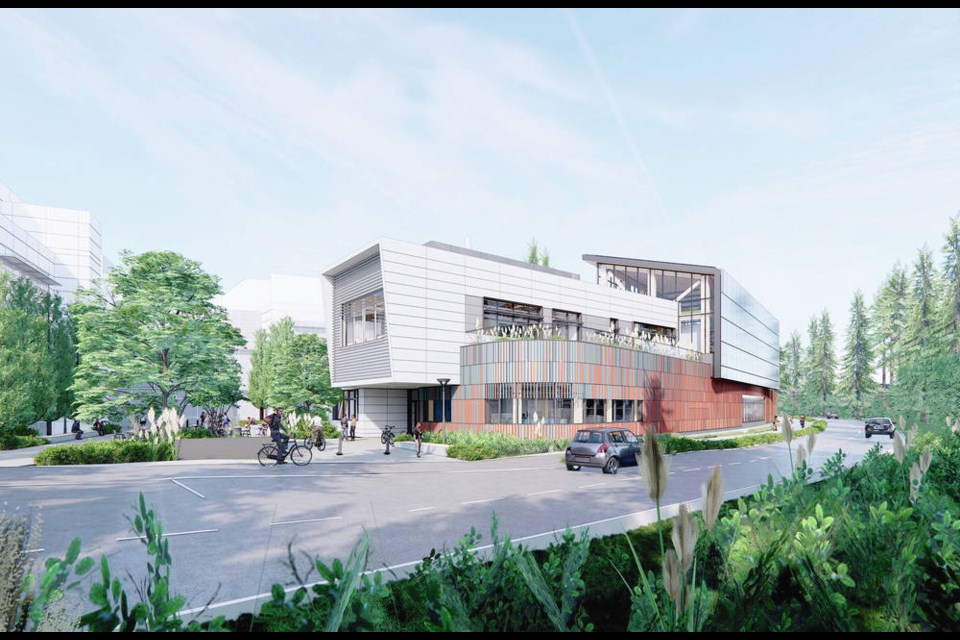The University of Victoria’s engineering and computer science building is being expanded and a new research and structures laboratory equipped with a gantry crane will be built as part of the $89.6-million project.
The province is spending $64.8 million and UVic is contributing $24.8 million for the development, set to break ground early in 2022 and be completed by 2024. The university’s share will include a fundraising campaign.
UVic is adding 500 more seats for students in computer science and its six engineering programs — biomedical, civil, computer, electrical, mechanical and software, resulting in 125 more graduates annually by 2023.
Speakers at the Thursday announcement at UVic emphasized the strong demand for trained engineers and computer scientists to tackle the globe’s most pressing issues — everything from climate change to health care and computer systems.
Mina Hoorfar, dean of UVic’s faculty of engineering and computer science, said the new structures will accelerate UVic’s research discoveries and help attract top international scholars and researchers.
“These landmark buildings will provide a dynamic environment for the training of future engineers and computer scientists. We plan to strengthen Victoria as a technology hub by attracting more top talent to UVic and helping position this region as a global centre of excellence.”
UVic alumni are already a major force in the capital region’s high-tech sector, Hoorfar said.
Those in the fields of engineering and computer science are leading the way in areas such as sustainable energy, innovative health care, green transportation systems, safe and secure computer networks, and smart and sustainable buildings and cities, she said.
The buildings will include new classrooms, labs and research space, design studios and offices, said Anne Kang, Minister of Advanced Education and Skills Training.
They will incorporate the latest developments in sustainable building design and construction, she said.
The engineering and computer science building expansion will stand six storeys and house new labs and teaching space.
Next door, the research and structures lab will include a 39-foot high (12-metre) space for structural testing and large-scale experiments associated with geotechnical work, building materials and building-science research carried out by civil engineers.
Each building has been designed for net-zero carbon dioxide emissions, a key feature of Canada’s climate plan. They will feature mass timber structure and passive house design, so they require less energy.
Mass timber construction means that the main load-bearing structures are made of solid or engineered wood. Lumber is laminated together to be used as structural components.
Sustainability features include heat pumps, and green and solar roofs.
To Jessica Hubbs, a civil engineering student and president of UVic’s engineering students’ society, the new buildings will be “inspiring real-world examples of the lessons we’re taught in class about green building design.”
UVic’s faculty of engineering and computer science currently has about 3,000 undergraduates and 600 graduate students. Between 2011 and 2016, B.C.’s employment growth for high-tech occupations was the highest in the country at 11.7 per cent, the university said.
UVic president Kevin Hall said the university aims to produce graduates who are “enterprising people with a social conscience and global perspective,” adding the new spaces will “provide the facilities to nurture highly skilled professionals who will be technological leaders and enrich the local and regional workforce and economy for decades to come.”
- - -
To comment on this article, send a letter to the editor: [email protected]



